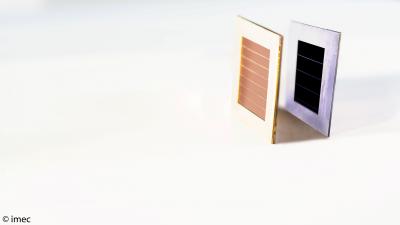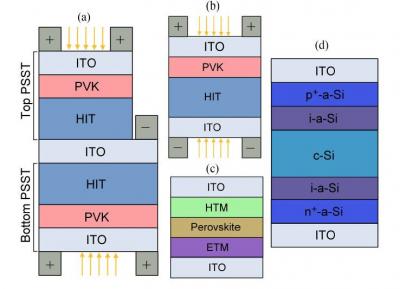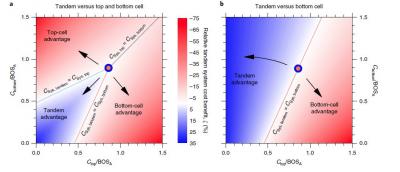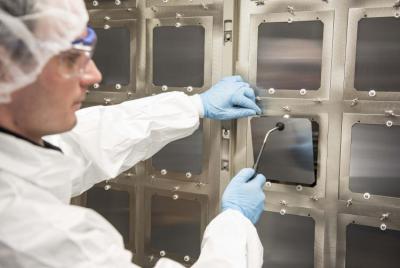HZB researchers achieve improved efficiency for monolithic perovskite/silicon tandem solar cells using textured foil
Researchers at Helmholtz-Zentrum Berlin (HZB) have demonstrated 25.5% efficiency for monolithic perovskite/silicon tandem solar cells using textured foil. In addition, the impact of texture position on performance and energy yield is simulated in their new work.
 Tandem solar cell device schematics of the experimentally realized architecture and SEM cross section image of the top cell
Tandem solar cell device schematics of the experimentally realized architecture and SEM cross section image of the top cell
The research team used a textured light management (LM) foil on the front-side of a tandem solar cell processed on a wafer with planar front-side and textured back-side. Consequently, the PCE of monolithic, 2-terminal perovskite/silicon-heterojunction tandem solar cells was improved from 23.4% to 25.5%. This approach replaced the use of textured silicon wafers, that can be utilized for light management but are typically not compatible with perovskite solution processing.









